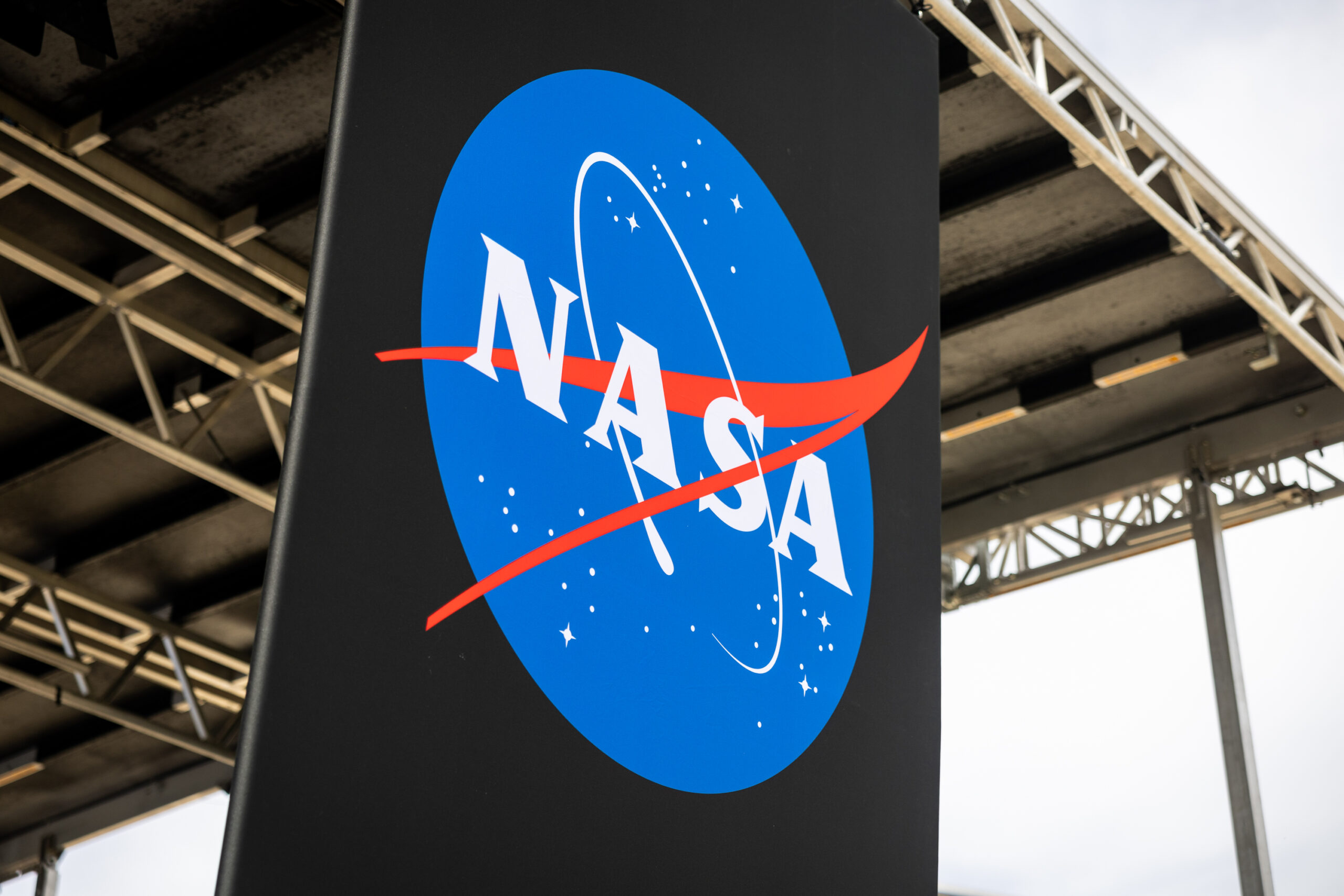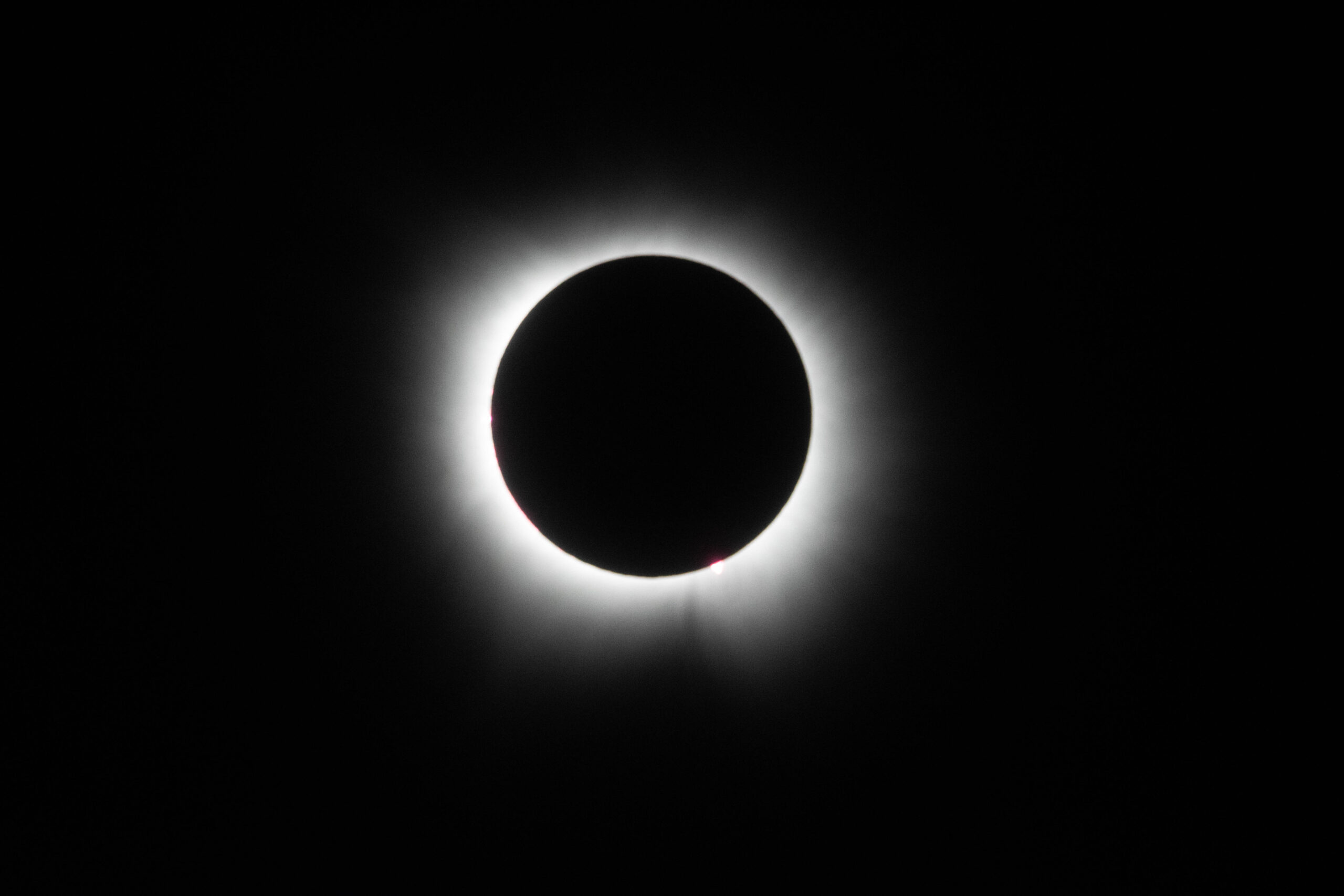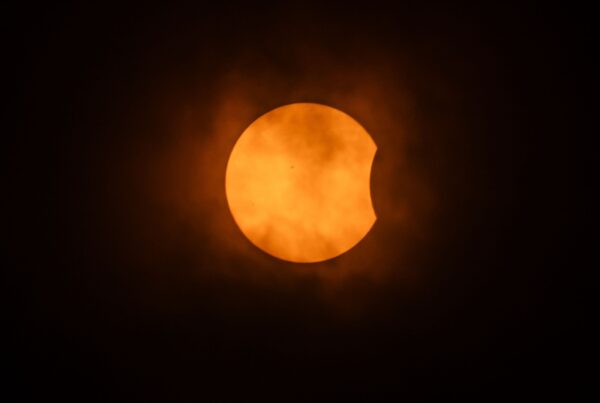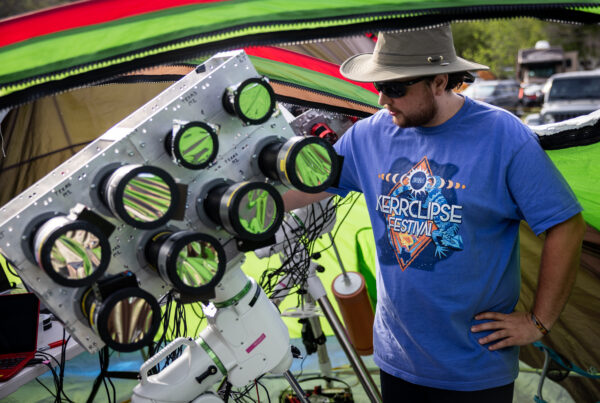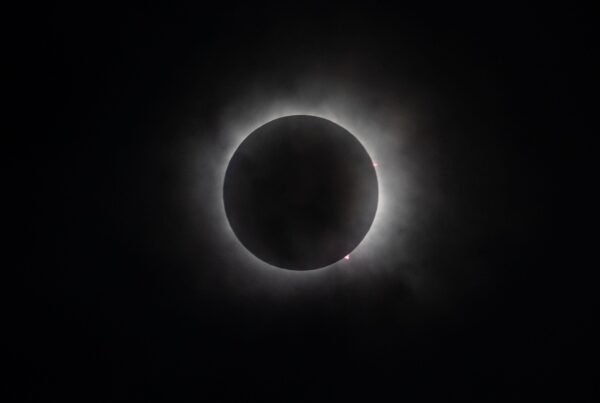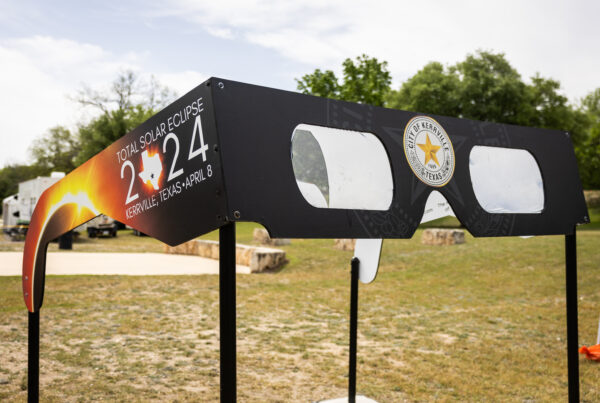This kind of eclipse is a unique opportunity for scientists, and where better to check it out than Kerrville? As of late, the town has been a very prominent place on the maps of eclipse chasers.
Alex Lockwood, NASA eclipse engagement lead, and Dr. Kate Calvin, chief scientist at NASA, spoke with Texas Standard about the kind of data the space agency was looking to collect in Kerrville. Listen to the interview above or read the transcript below.
This transcript has been edited lightly for clarity:
Alex Lockwood: I mean, Kerrville is very special in that it got an annular eclipse six months ago, and it’s getting a total eclipse on April 8. That is a really rare phenomenon where any kind of eclipse really only happens every couple hundred years in any given location. That’s the probability.
So the fact that Kerrville gets two in six months is incredible. And so we knew we wanted to be in this area that we’re calling the “Texas Nexus.” And Kerrville is the biggest city in this area, and they were happy to host us.
In the atmosphere, we’re going to be taking density, temperature, and conductivity measurements. We actually have some rockets that we’re sending into the atmosphere before, during and after the eclipse to take these measurements.
We’re also using radar to measure how the ionosphere, the upper layer of the atmosphere, is changing because that’s where radio waves bounce off of. And, for the sun, we are measuring the intensity and, you know, shape of the solar corona, because that’ll tell us about all of those energetic flares coming off.
We’re also studying the magnetic fields of both the Earth and the sun, as well as taking different spectral measurements.
Dr. Kate Calvin: Some of the things we’re interested in are both understanding the sun and understanding the effect that the sun has on the Earth.
So with respect to the sun, one of the things we really want to see is called the corona. It’s the sun’s atmosphere and it’s very dynamic. And it can have impacts on Earth through things called space weather. And this total solar eclipse gives us this opportunity to study that corona. So that’s studying the sun.
The other thing we want to do during the eclipse is look at how the eclipse affects Earth. So it affects Earth in ways that we can see. So you’ll see that it’s dark. You might see changes in clouds. You might be able to hear things like changes in animal sounds or animals that come out at dusk. So we want to observe all of that.
There’s also ways that the sun affects Earth that we can’t see, and we want to do science and study that as well.
Texas Standard: So I understand that this is an active part of the sun’s cycle. Could you say a little bit about why it’s fortunate that this eclipse is happening here at this time?
Dr. Kate Calvin: Yeah. So the sun is very dynamic and changes. It has a cycle that’s about 11 years long.
What happens during that cycle is the sun goes from calm, to active and stormy, back to calm. And when it’s active and stormy, you see more solar flares and more solar winds and more things that come off the sun. And since we’re getting closer to that period of solar maximum, that active, stormy period, we’re hoping to be able to see more from the sun than you would in a calm period.
I know that the corona is the part of the sun that we can see during the solar eclipse and not normally. Can you describe sort of what that looks like when you get to actually see it?
Dr. Kate Calvin: So first with the corona, it’s right off the lower part of the sun’s atmosphere. And normally what happens is it’s too bright. The sun is too bright to see it.
We do have instruments called corona grass that can block the sun’s light so that we can see that. But, you know, the moon does a better job of blocking it. And so we really want to see that.
And you’ll see things moving in that: particles, you might see some solar prominences. So it’s things that reach out into the corona. But we’ll be looking for all of that during the eclipse.


